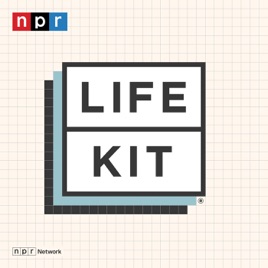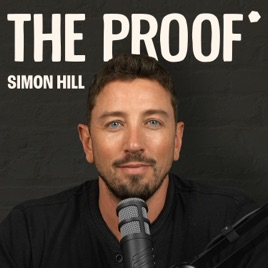
Advertise on podcast: You'll Die Smarter
Rating
4.7 from
Categories
Country
This podcast has
85 episodes
Language
Publisher
Explicit
No
Date created
2020/11/28
Average duration
4 min.
Release period
32 days
Description
If you ever wanted to know why you should drink before telling a lie, why Disney characters wear white gloves, or what is the ideal vacation length, then look no further.
Podcast episodes
Check latest episodes from You'll Die Smarter podcast
How does Champagne participate in the environmental transition?
2022/03/28
The Champagne industry has been committed to an environmental transition since 2000. Champagne was the first wine industry to carry out a carbon assessment and take ambitious measures to reduce its emissions. One of these actions was adopting a new, lighter standard bottle.
Since then, major research and development has been carried out in collaboration with glassmakers to find the best possible compromise to reduce the weight of the bottle while still preserving the mechanical properties. Because the bottle must withstand large quantities of handling and pressure, and task has been a real technological challenge!
As a result, after 5 years of experimentation, Champagne has adopted a bottle that weighs 853 grams instead of the previous 900 grams, a 7% reduction. This figure that may seem anecdotal, but it actually allows a reduction of 8,000 tons of CO2 per year, the equivalent of the emissions of 4000 vehicles.
But the bottle weight reduction is actually only one part of a broader action plan initiated in the early 2000s.
Concerned about preserving their terroir and the typicality of their wines, the winemakers and Champagne Houses have been meeting for more than twenty years to discuss both the climate challenge and the changing societal expectations for champagne. The industry has set up an action program in three parts: Carbon Footprint (the bottle weight reduction falls under this part), Water Footprint, and Biodiversity Footprint.
So, the sector is acting with three priorities: product excellence, respect for the terroir and the environment, and industry sustainability.
Significant results have already been obtained: 50% less of phytosanitary products, 90% of industrial waste treated and recovered, 100% of wine waste treated and recycled, and 100% of by-products recovered. A 20% reduction in the carbon footprint of each bottle and the creation of the “Viticulture Durable” in Champagne reference system
To continue its momentum, the sector has set new ambitious targets: by 2025, the use of herbicides will be abandoned entirely, and, by 2050, the carbon footprint per bottle will have been reduced by 75%. Also, by 2030, 100% of the vineyards will be environmentally certified.
Environmental preservation is a constant process, and while is an obvious path in the face of climate change, it is not always an easy one.
Champagne’s permanent quest to improve their environmental footprint is a long-term process. The challenges for these goals are twofold because natural cycles cannot be controlled, and traditional business model transformation takes years, even when the business does not need to take ecological cycles into account.
But Champagne is constantly innovating and leading the collective approach of continuous progress with goals to preserve its unique terroir.
The Champagne vineyard is already suffering from the effects of climate change. To combat, more than 50 research and development programs are underway, including the research of new grape varieties, the adoption of semi-large vines, and the fight against vine decline.
See acast.com/privacy for privacy and opt-out information.
Learn more about your ad choices. Visit megaphone.fm/adchoices
more
Where do the bubbles in champagne come from?
2022/03/19
This question seems to be on many people's minds if we believe the Google searches. It is indeed one of the most frequent searches about champagne.
To answer this question, you must first know that the wines of champagne, which have been produced since at least the 5th century, have not always had bubbles. The technique of sparkling champagne was not mastered until the end of the 17th century!
Legend has it that Dom Pierre Pérignon, a cellarer monk at Hautvillers Abbey from 1668 until he died in 1715, invented champagne as we know it today. In reality, this is not the case (pun intended). But he did invent the art of selecting specific grapes from different origins before pressing them. This results in better-balanced wines.
Sparkling Champagne is a happy byproduct from the desire to understand and master a natural phenomenon. Champagne is a northern vineyard with a harsh climate for the vine. In the 17th century, the grape harvest took place quite late, in October. For this reason, the yeasts of the grape did not have time to finish fermenting when the winter cold came, blocking their action. But in the spring, when the wine was bottled, they came back to life. The carbonic gas could not escape during this second fermentation, so the bubbles appeared. In fact, the wine fizzing was so extreme the bottles initially could explode from the pressure.
For a long time, the limited scientific understanding of fermentation was not possible. Thanks to the work of François, Maumené, Chaptal, and Pasteur, we finally understood the importance of yeasts and the contribution of sugar dosage during bottling. They also learned to measure the pressure inside the bottles. To these pioneers, we owe the Champagne method, which is now famous today for its rigor and excellence.
So, as you can see, the bottles themselves are a fundamental tool for creating the iconic bubbles. Let's take a closer look.
Alcoholic fermentation occurs when the yeast consumes sugar and releases carbon dioxide as a result of the reaction. Other compounds are also released, creating a wine's aroma. Now, based on how the wine is fermented, there are two possible results. If the wine is aged in vats or barrels, the gas escapes, creating still wines. If the wine is bottled, the carbonic gas from the fermentation remains trapped in the bottle. This is known as foam grip.
In order for carbonic gas to be released inside the bottle, it is vital that the bottle can withstand the pressure. You will notice that the glass of champagne bottles is much thicker than that of still wine bottles. This is to withstand the pressure, which is from 5 to 6 kilograms per square centimeter.
The glass is also important because of its shape and the presence of micro-apertures, which allow the formation of bubbles. Micro-apertures retain micro-bubbles that gradually grow and detach to form a train of bubbles that move to the surface of the wine, up to 50 per second. This means it is important to use a glass with a large base to let them form.
The cap also needs specific attention. It must be made of cork and reinforced by a wire and a wire plate, an invention patented in 1844 by Adolphe Jacquesson, a merchant in Chalons en Champagne.
Before we finish today, let’s take a look at the effects of bubbles on flavour...
See acast.com/privacy for privacy and opt-out information.
Learn more about your ad choices. Visit megaphone.fm/adchoices
more
How to match food with Champagne ?
2021/12/22
The ideal drink during Christmas Time and year’s end celebrations is of course Champagne. But, are you sure to know exactly how to match food with this exceptional wine ?
Before answering precisely to this question, here’s a little reminder: Champagne is THE special drink of the celebration and that is nothing new since Champagne wines were served during French kings’ coronations that used to happen in Reims since the baptism of Clovis, on Christmas Day in 496.
If the question of matching food with Champagnes wines arises, it is because of the great diversity of those wines.
Beyond the choice of vinification (barrel ageing, ageing time, ...), the diversity of Champagne wines is coming specifically from the art of blending. Blending is selecting and combining several fermented wines between them until getting the precise style that we want to give to its Champagne.
First of all, the crus: soil, subsoil, exposure and climate give each village (or cru) different characteristics.
Then, the grape varieties: for Champagne, the majority are chardonnay, pinot noir and meunier.
And finally the dosage, which depends on the style of wine desired: "extra brut, brut, sec or sweet".
You get the picture, factors that I have just listed allow the production of the different types of Champagnes. It’s among them that you would be able to choose in order to go with your dishes.
First there is the Champagne without year: it is the most symbolic in terms of brands’ style and know-how, as they work to ensure its consistency from year to year. It is therefore the standard of the brands and is their pride and joy.
Then there is the vintage Champagne. It corresponds to the case where the winemaker chooses to blend wines from a single year because it has exceptional characteristics. These wines must then be aged in the cellar for a minimum of 3 years and are characterised by their power, maturity and balance.
Then we find the Blanc de blancs. These are Champagnes made from 100% white grapes. They are lively, airy and have a fresh aroma.
Next, the Blanc de Noirs Champagne. These champagnes are made from 100% black grapes (pinot noir and meunier) and can be defined as greedy, powerful and complex.
Finally, there is Rosé Champagne. It can be made from a "saignée" or a blend of white and red champagne wines. Delicate to make, it is fruity and structured.
Which ones should you choose ? I use plural because if you wish to surprise your guests for the special occasion like New Year’s Eve, you can serve Champagne wines at unexpected moments (or even throughout the meal, it is totally possible for an extraordinary night!)
To conclude, at dessert time: if it is sweet, it is recommended to opt for a Sec or demi-sec champagne champagne, which will not distort the flavours of your pastries and cakes. However, citrus-based desserts can be combined very well with most of “classic” brut Champagnes and those with red fruits with a Rosé Champagne.
The end of year celebrations can be a good occasion to discover the diversity of champagnes wines; a diversity that allow you to compose subtle food and wine pairings all year long!
Don’t hesitate to talk to your wine merchant or the producer, he will be delighted to guide you. And above all, don’t hesitate to taste it: Champagne is a product of pleasure and conviviality, what matters above all is what you are feeling when you taste it (in moderation, of course!). The perfect match is above all the one that transports you.
Here’s a toast for all these great suggestions! I hope I've made your mouth water!
Happy holidays to all!
See acast.com/privacy for privacy and opt-out information.
Learn more about your ad choices. Visit megaphone.fm/adchoices
more
How is the title Champagne protected?
2021/12/13
As you probably know, Champagne is the name of a particular type of wine, but it is, more importantly, the name of a particular region in France – a region proud of its vineyards and its people who have preserved and developed the region through such a unique product, the very name has become synonymous with class and refinement. So, as you’ll soon learn, this region and it’s wine are so intimately linked, that in modern times, only Champagne can produce Champagne.
Before talking about the means in which the Champenois protect this name, let's underline that the title of ‘Champagne’ was not made in one day. The history of the wine itself is several centuries old and rich with multiple key events. You may recall much of this from a previous episode, but let’s do a quick recap.
Between the 1st and 4th centuries, the Champagne vineyards were formed with monks heading the precise selecting and mixing of grapes. Soon the wines were particularly noted for their effervescent nature, and shortly thereafter, Champagne became the drink of the elite, notably the favorite wine of Louis XIV and many more French and foreign royalty to follow.
Here’s where things begin to get a little interesting. From the 19th century, wines from other regions began using the name “champagne” for their own wines, making the most of the prestige association with the title.
The first lawsuits to defend the name took place in 1844. The Champenois were urgent to protect it legally. To begin with, the Champenois demanded the strict delimitation of the production area. Then they set rigorous vineyard management methods and required rules of elaboration, which in 1936, finally led to the recognition of the Appellation d'Origine Contrôlée, the AOC, or in English, “The Controlled Label of Origin.” The AOC is an official sign of quality that identifies and protects a product whose production stages are carried out in the same geographical area and according to recognized know-how. Champagne’s AOC covers 34,000 hectares and the aforementioned specifications of production. Because of this AOC the only wines legally recognized as "Champagne" are specifically from the region of Champagne and are produces to the correct standards.
Obtaining this AOC for the wine of Champagne was an essential step in its protection, but it was not the only one. Indeed, the winegrowers and wine houses had to – and still have to – fight to prevent the title from being used illegally, especially abroad. United within the framework of the Champagne Committee, the winegrowers and wine houses continue to reinforce this heritage, preserving their prestigious name. These efforts have allowed the recognition of the Champagne name by greater than 120 countries as the continue to fight effectively against frauds and counterfeits, especially since the latter are often of poor quality.
The "Coteaux, Maisons et Caves de Champagne" (the Champagne Hillsides, Houses and Cellars) have been listed as a UNESCO World Heritage Site since 2015. This recognition by UNESCO of the Exceptional Universal Value of the sector's heritage is an asset and also a responsibility. It helps defend and promote the prestigious name but, in return, requires great rigor on the part of the sector in the preservation of its historical heritage.
Last little interesting fact for today is that the unwavering commitment of the Champagne industry to protect its name benefits all other ventures to do the same. Its multiple scrimmages have advanced the law of the appellations with numerous favorable jurisprudences that benefit all appellations. They play a global role in protecting heritage, a role that reaches far beyond the
vineyards and wine houses of Champagne.
See acast.com/privacy for privacy and opt-out information.
Learn more about your ad choices. Visit megaphone.fm/adchoices
more
What is the origin of Champagne?
2021/11/22
Associated with a specific region in France, champagne is a wine not quite like any other. While the world's elite has appreciated it since the Middle Ages, the technique of making sparkling champagne was not mastered until the end of the 17th century.
But first, let’s take a look back. Between the 1st and 4th centuries, the Champagne vineyards began to form. Like in other wine-producing regions, vinification was mainly the job of abbeys and monasteries. Wine is indeed a central element of the Christian liturgy.
The mixing was practiced by monks, who pressed together grapes of different varieties delivered by the winegrowers as their form of tithe, a regular giving to the church.
Some cellarer monks, such as the famous Dom Pierre Pérignon from the abbey of Hautvillers, transformed the process of mixing into a precise craft. He carefully and intentionally selected grapes from different regions to obtain better-balanced wines.
Some wines, such as the wine of Aÿ or Sillery, already had an excellent reputation. These wines were noted and praised for their effervescence, despite a lack of understanding in how the bubbles were produced.
Only at the end of the 17th century did this collection of bubbly wines begin to be dubbed as the “wines of Champagne,” later shortened to “champagne.”
From it’s conception, champagne was a luxury for the elites, definitely not for more common folk. Since the baptism of King Clovis the First in the 5th century, the coronation of French kings has taken place in Reims, in Champagne, where the wine of the region could be served with prominence.
Centuries after Clovis, champagne was the favorite wine of Louis XIV, and then Louis XV and the court of Versailles. This royal favor contributed to the drink’s fame, leading it to quickly becoming the wine for celebrations and important events across Europe. In 1717, Tsar Peter the Great, visiting Fontainebleau, liked it so much that he asked for four extra bottles to be brought to his suite after dinner. Philip V of Spain said he drank only this wine. Frederick II of Prussia was passionate about its production, and Casanova used it to seduce his Venetian conquests. Thanks to figures like these, champagne became the most famous wine among the upper class.
For a long time, the wine of Champagne was reserved for a thin fringe of society. The delicate conditions of production and the relative smallness of the vineyards explain the exclusivity of its consumption.
Little by little, however, it is becoming less elitist and more common a drink, allowing people to celebrate a variety of events alongside the bubbles. If christenings, weddings, and graduations can be celebrated with champagne, then the drink can give a special touch to those other more mundane but equally special moments - a get-together, a romantic meal, a tasting, or even some “personal time.”
Whether with family, friends, or lovers, champagne is today the number one wine symbolizing the festive spirit and elegance of France throughout the world.
Please drink responsibly.
See acast.com/privacy for privacy and opt-out information.
Learn more about your ad choices. Visit megaphone.fm/adchoices
more
How heavy are the clouds?
2021/04/22
The clouds we see in the sky seem rather light, almost like absorbent cotton. However, being filled with water and ice, these gigantic suspended masses weigh - in reality - up to several tons. Don't be fooled by appearances, the clouds that float above your heads are more like anvils in suspension. Indeed, being made of billions of water and ice droplets, these vaporous masses can weigh far more than you may expect. With a water density of about 0.5 grams per cubed meter, a cloud of 100 kilometers cubed can reach the mass of 500 000 tons. See acast.com/privacy for privacy and opt-out information.
Learn more about your ad choices. Visit megaphone.fm/adchoices
more
What is the Rowbotham experiment?
2021/04/21
Long before Magellan completed the first circumnavigation of the globe, in the 16th century, ancient Greek scientists had demonstrated, by simple observation, that the Earth was round, or rather spherical. Of course, this did not prevent some people from believing that our planet was flat. To be fair, even some individuals don’t believe it now. See acast.com/privacy for privacy and opt-out information.
Learn more about your ad choices. Visit megaphone.fm/adchoices
more
Why is biting foil unpleasant?
2021/04/20
As you may have already noticed, if you bite aluminum foil, the strange sensation of heat or pain in your teeth is quite unpleasant. This is due to the contact between the aluminum and the metals that make up the fillings in some teeth. If you feel a tingling sensation when biting aluminum foil, it is because some of your teeth have been provided with fillings. In this case, the connection between the aluminum and the elements of the filling causes a reaction similar to that of a battery. See acast.com/privacy for privacy and opt-out information.
Learn more about your ad choices. Visit megaphone.fm/adchoices
more
Why are Bermuda shorts a military garment?
2021/04/19
You all know the Bermuda shorts: those shorts that come down to the knee, unlike the classic shorts that only cover part of the thighs. You may be more familiar with the name “dad shorts.” While today it is considered as a vacation or a summer outfit for older generations, its origin is quite different. See acast.com/privacy for privacy and opt-out information.
Learn more about your ad choices. Visit megaphone.fm/adchoices
more
Why do many Vietnamese have "Nguyen" in their name?
2021/04/18
According to some estimates, the surname "Nguyen" is used by around 40% of the population in Vietnam. This country is home to 95 million people, so there are nearly 38 million Mr. or Mrs. Nguyen. This makes Nguyen the 4th most popular name in the world, just behind Lee, Zhang and Wang, all Chinese names. See acast.com/privacy for privacy and opt-out information.
Learn more about your ad choices. Visit megaphone.fm/adchoices
more
What are the 10 most surprising objects launched into space?
2021/04/15
Mankind doesn't just send rockets or space probes into space. In fact, many unexpected objects have been launched into space, all for the sake of science. See acast.com/privacy for privacy and opt-out information.
Learn more about your ad choices. Visit megaphone.fm/adchoices
more
Why are ancient Egyptian depictions of humans drawn in profile?
2021/04/14
On the walls of the Egyptian pyramids, human depictions, and especially depictions of nobility, are often represented in profile. The reason they are designed this way is primarily religious. If you look closely, you’ll notice that the ancient Egyptian characters are not entirely represented in profile. Only the face, the legs and the arms are painted in this way. The bust and torse is represented from the front. And actually the singular eye on the profile face is depicted as if being viewed from the front, rather asynchronous to the rest of the face. See acast.com/privacy for privacy and opt-out information.
Learn more about your ad choices. Visit megaphone.fm/adchoices
more
Podcast sponsorship advertising
Start advertising on You'll Die Smarter & sponsor relevant audience podcasts
You may also like these education Podcasts

4.4
3669
780
Life Kit
NPR

4.9
7494
485
Follow Him: A Come, Follow Me Podcast
Hank Smith & John Bytheway

4.9
9484
252
Cal's Week in Review
MeatEater

4.9
2306
299
The Proof with Simon Hill
Live better for longer

4.7
5145
161
Financial Feminist
Her First $100K

4.6
12786
897
StarTalk Radio
Neil deGrasse Tyson

4.9
2605
404
Creating Confidence with Heather Monahan
Heather Monahan | YAP Media Network

4.4
2597
405
Shameless Sex
Amy Baldwin and April Lampert| Pleasure Podcasts

4.8
14142
196
Philosophize This!
Stephen West

4.7
245
38
Settle the Stars: The Science of Space Exploration
Edgeworks Nebula



